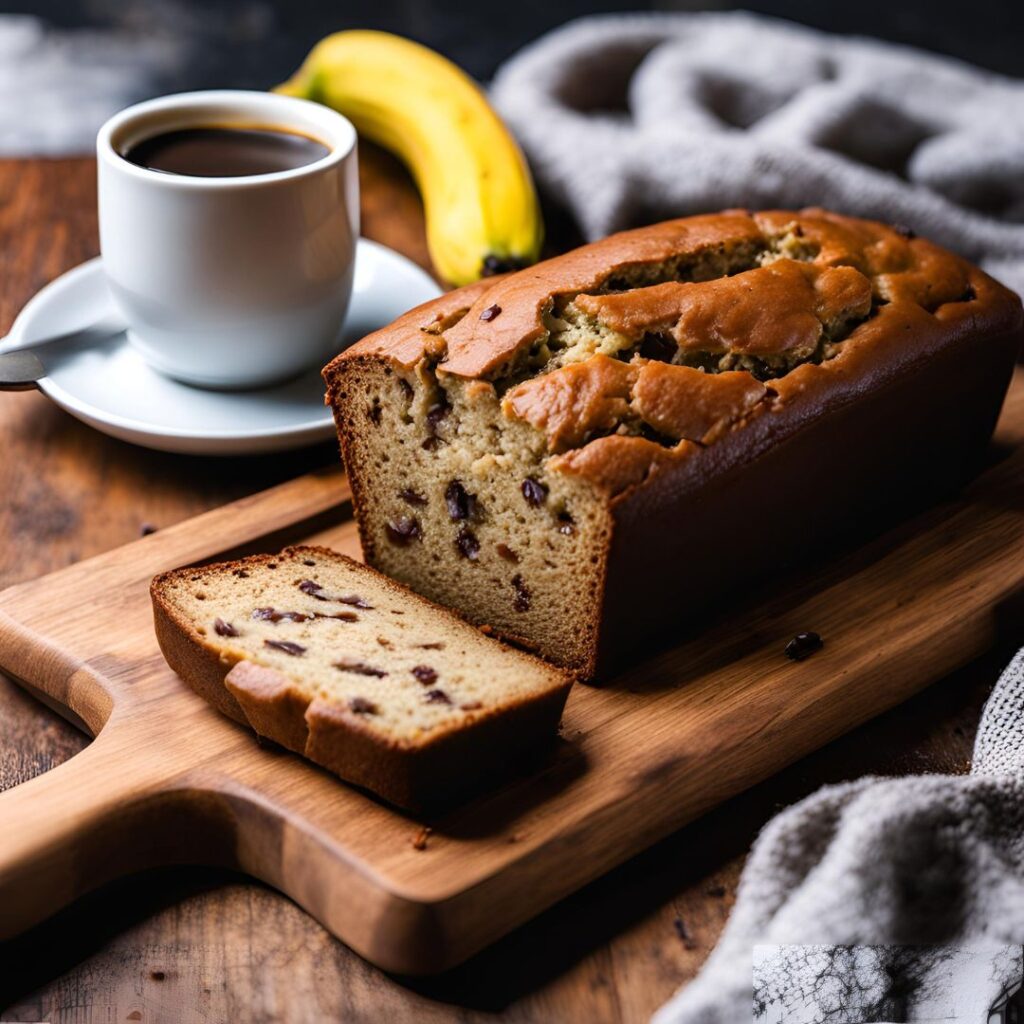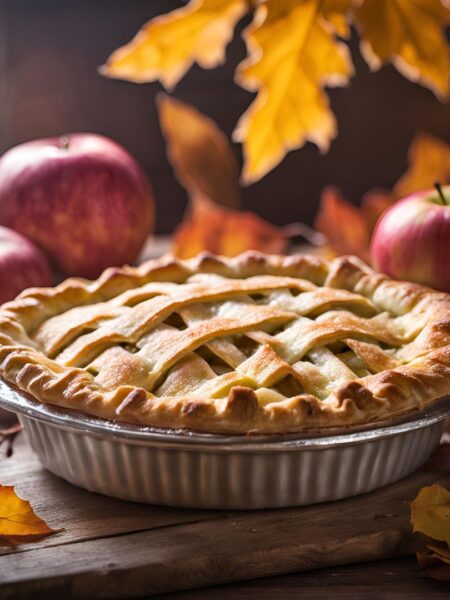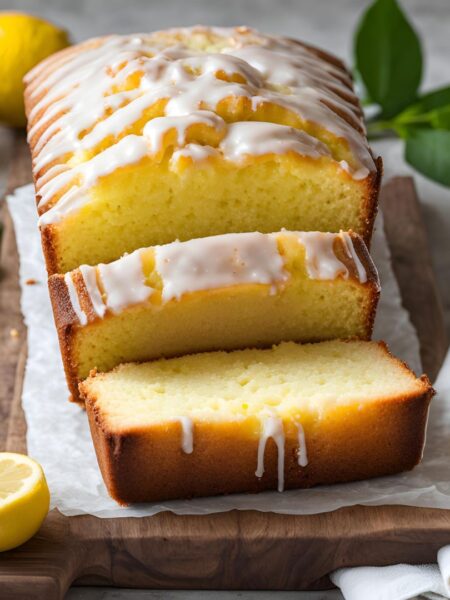Banana Bread Recipe : A Timeless Homemade Treat. Banana bread is more than just a dessert—it’s a nostalgic and comforting classic that has graced family kitchens for generations. Whether it’s served warm with butter for breakfast, packed in a lunchbox for an afternoon snack, or enjoyed with a cup of tea in the evening, banana bread’s appeal transcends the time of day or occasion. The sweet, rich aroma that fills the kitchen while it bakes is enough to make anyone feel at home.
Though banana bread has evolved over the years to include all sorts of delicious variations, such as chocolate chips, walnuts, or even a touch of cinnamon, the classic version remains an irreplaceable staple in many households. The beauty of banana bread lies not only in its simplicity but also in its versatility. Whether you’re a novice baker or a seasoned pro, this recipe is easy to follow, adaptable to your preferences, and practically foolproof.
In this article, we’ll dive into the origins of banana bread, discuss why it continues to be so popular, and provide you with a tried-and-true recipe for the perfect loaf. But first, let’s take a closer look at how this humble, homely bread came to be such a beloved favorite across the world.
The History and Evolution of Banana Bread
Banana bread, as we know it today, is a relatively recent invention, but its history is deeply intertwined with the development of baking as we know it. The earliest forms of banana bread likely date back to the late 19th and early 20th centuries, when bananas became more widely available in the United States and Europe. Before then, bananas were considered a luxury, often too expensive or rare for most households to incorporate into everyday cooking.
Banana bread rose to popularity in the 1930s, during the Great Depression. People needed creative ways to use overripe bananas, as nothing could go to waste during such difficult times. Baking with bananas became an excellent solution for extending the life of this fruit, turning what would have been discarded into a delicious, moist loaf that could be eaten for days. It was during this era that the first banana bread recipes began to appear in American cookbooks, with baking soda and baking powder playing a key role in giving the bread its rise and fluffy texture.
The industrialization of food production in the 20th century also contributed to the rise of banana bread’s popularity. As baking powder became more accessible and affordable, home bakers could create quick breads like banana bread without the need for yeast or the extended fermentation process. This shift in baking methods made banana bread not only a practical and affordable treat but also one that could be made quickly and easily by almost anyone, regardless of their level of expertise in the kitchen.
In the decades that followed, banana bread remained a favorite in many homes, with new variations and twists emerging over time. From incorporating nuts, spices, and chocolate to experimenting with different flours and sweeteners, banana bread has become a versatile canvas for bakers to express their creativity. Yet, despite the many modern adaptations, the classic recipe still holds a special place in the hearts (and kitchens) of those who love the simple, comforting taste of this beloved treat.
Why Banana Bread Stands the Test of Time
In the world of baked goods, few recipes have remained as steadfastly popular as banana bread. But what is it about this humble loaf that has allowed it to endure through decades of changing food trends? The answer lies in its unique combination of simplicity, flavor, and practicality.
One of banana bread’s greatest strengths is its simplicity. Unlike more complicated desserts, which require precision, technique, and specialized equipment, banana bread is remarkably straightforward. At its core, the recipe requires just a handful of common ingredients—bananas, flour, sugar, eggs, and butter or oil—and most people have these items on hand at any given time. This ease of preparation makes it accessible to both beginner bakers and busy professionals alike.
Moreover, banana bread’s rich flavor profile is both familiar and comforting. The natural sweetness of ripe bananas combined with the buttery, soft crumb creates a nostalgic flavor that evokes memories of home-cooked meals and family gatherings. It’s a dessert that feels like a hug in food form—warm, inviting, and satisfying.
Another reason banana bread has remained so popular is its practicality. The use of overripe bananas—those that are too soft and mushy to enjoy as-is—makes it an excellent way to reduce food waste. Instead of throwing away bananas that are past their prime, you can transform them into a delicious treat that can be enjoyed for days. Banana bread also freezes well, making it a convenient option for meal prep or for keeping on hand for unexpected guests.
Finally, banana bread’s adaptability has helped it stay relevant over time. While the classic recipe is beloved for its simplicity, the potential for customization means that there’s a banana bread recipe for everyone. Whether you prefer it plain or packed with add-ins like walnuts, chocolate chips, or even swirls of cinnamon, banana bread is endlessly versatile. Health-conscious bakers can experiment with whole grain flours, reduced sugar, or plant-based alternatives, making it a dish that can be enjoyed by people with a wide range of dietary preferences and needs.
Banana bread is a symbol of resilience
Banana bread’s staying power is a testament to its universal appeal. It’s a recipe that marries practicality with pleasure, offering a delicious way to use up ripe bananas while filling your home with the comforting aroma of freshly baked bread. Whether you stick to the classic recipe or experiment with new flavors and ingredients, banana bread is a timeless treat that continues to bring people together. From its humble beginnings to its modern-day popularity, banana bread is a symbol of resilience, creativity, and comfort in the world of home baking.
Ingredients: Banana Bread Recipe
For Banana Bread:
- 3 ripe bananas (mashed)
- 1/3 cup melted butter (unsalted or salted)
- 3/4 cup sugar (you can reduce to 1/2 cup for less sweetness)
- 1 large egg (beaten)
- 1 teaspoon vanilla extract
- 1 teaspoon baking soda
- Pinch of salt
- 1 1/2 cups all-purpose flour
Optional Add-ins:
- 1/2 cup chopped walnuts or pecans (optional for some crunch)
- 1/2 cup chocolate chips (optional for added sweetness)
- 1/2 teaspoon ground cinnamon (optional for extra flavor)
Instructions:
Preheat the oven to 350°F (175°C). Grease a 9×5-inch loaf pan or line it with parchment paper.
Mash the bananas in a large mixing bowl until smooth. Stir in the melted butter.
Add sugar, egg, and vanilla to the banana mixture. Mix until well combined.
Sprinkle the baking soda and salt over the mixture and stir in.
Gently mix in the flour. Stir until just incorporated (do not overmix). If you’re using add-ins like nuts, chocolate chips, or cinnamon, fold them in at this stage.
Pour the batter into the prepared loaf pan and smooth the top.
Bake for 55–65 minutes, or until a toothpick inserted into the center comes out clean.
Cool the bread in the pan for about 10 minutes, then transfer it to a wire rack to cool completely.
Time Breakdown: Banana Bread Recipe
- Prep Time: 10 minutes
- Bake Time: 55–65 minutes
- Cooling Time: 10 minutes
Total Time: 75–85 minutes
Servings: Yields: 1 loaf (approximately 8-10 slices)
Some More Interesting Recipes –
- Zucchini Bread Recipe
- Pumpkin Bread Recipe
- Cinnamon Rolls Recipe
- Pineapple Cake Recipe
- Strawberry Cake Recipe
- Apple Cake Recipe
- Peanut Butter Cookies Recipe
- Oatmeal Cookies Recipe
- Chocolate Chip Cookies Recipe
Frequently Asked Questions (FAQs) Banana Bread Recipe
1. What type of bananas should I use?
Use overripe bananas for the best flavor and texture for this Banana Bread Recipe. Bananas that are soft, heavily spotted, or fully brown work well. Their natural sweetness and moisture enhance the banana bread’s taste.
2. Can I freeze bananas for banana bread?
Yes! You can freeze overripe bananas. Simply peel them and place them in a freezer bag. When you’re ready to bake, thaw them at room temperature or in the microwave. They will be mushy, but perfect for baking.
3. Can I use less sugar in this recipe?
Yes. For this Banana Bread Recipe, you can adjust the sugar level to your preference. If you prefer a less sweet loaf, reduce the sugar to 1/2 cup or even lower. Keep in mind that overly ripe bananas are naturally sweet, so the bread may still taste great.
4. What can I substitute for butter in this recipe ?
For this Banana Bread Recipe, You can replace butter with an equal amount of oil (like vegetable or canola oil) or applesauce for a lower-fat version. Coconut oil is another popular alternative, adding a subtle flavor.
5. Why is my banana bread dry?
Dry banana bread can result from overmixing the batter or overbaking. To prevent this, stir just until the ingredients are combined, and bake for the recommended time. Also, check your oven temperature, as an oven that runs hot can overbake the bread.
6. Can I add mix-ins like nuts or chocolate chips to banana bread?
Yes! Nuts, chocolate chips, raisins, or cinnamon are great additions to banana bread. Add about 1/2 to 1 cup of your preferred mix-ins when folding in the flour for added texture and flavor.
7. Can I make it gluten-free with this recipe?
Yes. With this Banana Bread Recipe ,you can make gluten-free banana bread by substituting the all-purpose flour with a gluten-free flour blend. Ensure the blend contains xanthan gum or another binder to maintain the bread’s structure.
8. How do I know when banana bread is done baking?
Insert a toothpick or skewer into the center of the bread. If it comes out clean or with only a few moist crumbs, the banana bread is done. The top should also be golden brown and firm to the touch.
9. Can I freeze banana bread after baking?
Absolutely! Allow the banana bread to cool completely, then wrap it tightly in plastic wrap and aluminum foil or place it in a freezer bag. It can be stored in the freezer for up to 3 months. Thaw at room temperature before serving.
10. Why did my banana bread sink in the middle?
Sinking can occur if the bread is undercooked or if the batter was overmixed, which incorporates too much air. Be sure to follow the baking time and test with a toothpick to ensure the center is fully baked.
11. Can I make banana bread muffins with the same recipe?
Yes, you can use the banana bread recipe to make muffins. Simply divide the batter into a muffin tin lined with paper liners and bake at 350°F (175°C) for 20–25 minutes, or until a toothpick comes out clean.
12. How can I make banana bread healthier with this recipe?
You can make banana bread healthier by using whole wheat flour or a blend of whole wheat and all-purpose flour, reducing the sugar, using applesauce instead of butter, and adding nutritious ingredients like chia seeds, flaxseeds, or oats.
Banana Bread Recipe
Banana bread’s staying power is a testament to its universal appeal. It’s a recipe that marries practicality with pleasure, offering a delicious way to use up ripe bananas while filling your home with the comforting aroma of freshly baked bread. Whether you stick to the classic recipe or experiment with new flavors and ingredients, banana bread is a timeless treat that continues to bring people together. From its humble beginnings to its modern-day popularity, banana bread is a symbol of resilience, creativity, and comfort in the world of home baking.

Ingredients: Banana Bread Recipe
For Banana Bread:
Optional Add-ins:
Cooking Instructions: Banana Bread Recipe
- Preheat the oven to 350°F (175°C). Grease a 9x5-inch loaf pan or line it with parchment paper.
- Mash the bananas in a large mixing bowl until smooth. Stir in the melted butter.
- Add sugar, egg, and vanilla to the banana mixture. Mix until well combined.
- Sprinkle the baking soda and salt over the mixture and stir in.
- Gently mix in the flour. Stir until just incorporated (do not overmix). If you’re using add-ins like nuts, chocolate chips, or cinnamon, fold them in at this stage.
- Pour the batter into the prepared loaf pan and smooth the top.
- Bake for 55–65 minutes, or until a toothpick inserted into the center comes out clean.
- Cool the bread in the pan for about 10 minutes, then transfer it to a wire rack to cool completely.





